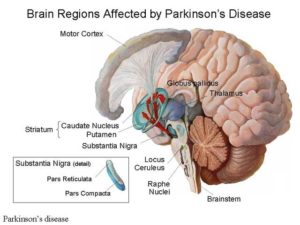There are multiple subtypes of movement disorders that carry hallmark features that help distinguish them from one another. Typically, a movement disorder can result from a poor transition of signals from the brain to rest of the body. This in turn alters the speed, fluency, quality and ease of the movement
Subtypes of movement disorders treated at Premier Neurology and Pain Specialists:
- Parkinson’s Disease
- Essential Tremor
- Tic disorders
- Dystonia
- Chorea
- Myoclonus
- Cerebellar ataxia
- Gait disorders
Diagnostic Workup:
- History and Physical Exam
- Imaging: MRI, Fmri
- Blood diagnostic work for toxic causes in select cases
Treatment:
- Physical and occupational therapy
- Big and Loud therapy
- Lifestyle modifications
- Use of gait assistance devices
- Medications: these are specific to diagnosis and severity
Common features of Parkinson’s Disease:
- Slow and/or small movement rigidity
- Resting tremor
- postural instability,
- Shuffling gait
- Monotone voice
- freezing in activity
- hypotension (low blood pressure)
- constipations
- arm or leg pain
- day time sleepiness
- sleep difficulty
- cognitive changes.
- Mood changes.
- Fatigue

